News
 10 ways to help save Puget Sound’s resident orcas TODAY!
10 ways to help save Puget Sound’s resident orcas TODAY!
After the most recent decline in the Southern Resident Killer Whale population, many supporters are asking “What can we do, TODAY!?” to help conserve this endangered population.
 Food-Energy-Water Nexus; Urban Systems Analysis
Food-Energy-Water Nexus; Urban Systems Analysis
Brad Gaolach Describes how our food, energy, and water systems are inextricably linked. Watch full video to learn more!
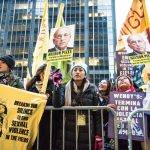 Meet the Farmworkers Leading the #MeToo Fight For Workers Everywhere
Meet the Farmworkers Leading the #MeToo Fight For Workers Everywhere
5/21/18 From farmworkers to fashion models, worker-led social responsibility sets out to protect basic human rights.
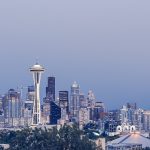 Seattle Approves Plan for Tax on Its Largest Businesses to Help Pay for Housing, Homeless Services
Seattle Approves Plan for Tax on Its Largest Businesses to Help Pay for Housing, Homeless Services
5/14/18 The Seattle City Council Monday afternoon chose a smaller, simpler, “reasonable” compromise to create a new tax on the city’s largest companies to help pay for affordable housing and homelessness services.
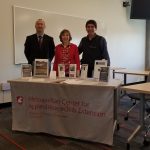 The Metro Center Awarded: Innovative and Creativity – Team for 2018
The Metro Center Awarded: Innovative and Creativity – Team for 2018
The Metropolitan Center for Applied Research and Extension was recently announced as a national award winner by the National Association of Community Development Extension Professionals (NACDEP).
 Our Lack of Paid Leave Is a Public Health Crisis
Our Lack of Paid Leave Is a Public Health Crisis
4/27/18 Studies show having time off to recover, without worrying about money, is key to maternal and infant health, and so much more.
 The Top Jobs Where Women Are Outnumbered by Men Named John
The Top Jobs Where Women Are Outnumbered by Men Named John
In the corridors of American power, it can be as easy to find a man named John as it is to find a woman.
 The staggering environmental footprint of all the food that we just throw in the trash
The staggering environmental footprint of all the food that we just throw in the trash
4/18/17 The mass quantities of food Americans waste every year has staggering environmental consequences, according to a study published Wednesday.
 Your lifestyle is making blue box recycling unsustainable
Your lifestyle is making blue box recycling unsustainable
(3/27/18) Recycling costs are rising as communities struggle to adapt to more plastics, fewer newspapers.
 The Evolution of a Smart & Sustainable City
The Evolution of a Smart & Sustainable City
3/27/18 Many cities in the U.S. and around the world have started the process of transformation from analog to smart and sustainable. The process tends to starts with the implementation of a series of independent infrastructure systems connected to a digitally linked network. Yet, the transformation process for cities is still in its early stages.
 Intelligent Urban Watersheds
Intelligent Urban Watersheds
3/20/18 Giant leaps forward in computing power, combined with advances and cost reductions in sensor and telemetry technologies, have made it possible to go far beyond the status quo and break into a new echelon of opportunities. We can now run high resolution models in real time, with real world precipitation data, while correcting critical downstream model nodes with observed sensor data. The outcome is perpetually calibrated digital copies of the urban watershed for far more effective real time operational decision making and control.
 Not Too Late To Save Critically Endangered Orcas Say State Leaders And Feds
Not Too Late To Save Critically Endangered Orcas Say State Leaders And Feds
3/14/18 The Pacific Northwest’s beloved orcas will not survive unless humans do more to ensure adequate food and cleaner, quieter waters. That was one of the messages at a crowded signing ceremony in Seattle convened by Washington Gov. Jay Inslee.
 WA to protect against voting discrimination with new law
WA to protect against voting discrimination with new law
3/6/18 Washington’s Voting Rights Act is awaiting Gov. Jay Inslee’s signature. “The Legislature finds that electoral systems that deny race, color, or language minority groups an equal opportunity to elect candidates of their choice are inconsistent with the right to free and equal elections,” reads the final version of the bill.
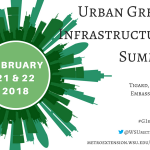 Sharing Knowledge at the Urban Green Infrastructure Summit in Portland, Oregon
Sharing Knowledge at the Urban Green Infrastructure Summit in Portland, Oregon
2/22/18 The Rutgers Cooperative Extension (RCE) Water Resources Program’s Christopher C. Obropta and Rosana Da Silva were invited to deliver the keynote address at the Urban Green Infrastructure Summit in Portland, OR. The goal of the summit was to create new collaborative networks, identify research and education priorities, and share existing resources.
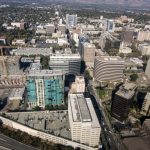 When a City Closes the Streets to Cars, It Opens Streets to People
When a City Closes the Streets to Cars, It Opens Streets to People
2/14/18 If you ask the average American if they’d like to see a street closure on the street leading to their favorite restaurant or park, the answer will likely be, “no!” If you gave the average American the option to walk or drive, they will generally choose to drive. However, these sentiments are slowly changing. An amazing trend is sweeping our nation: cities are beginning to see the transformative power of open streets programs.
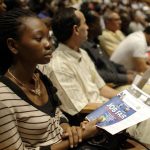 Even When Black Unemployment Is At Record Lows, It’s Dangerously High
Even When Black Unemployment Is At Record Lows, It’s Dangerously High
(2/3/18) On Tuesday, President Trump painted a rosy picture of the economy during his first State of the Union speech: rising wages, a boom in manufacturing jobs, jobless claims were at their lowest in nearly half a century. But one of the biggest applause breaks during his survey of the landscape greeted this claim: “Something I’m very proud of — African-American unemployment stands at the lowest rate ever recorded.” Cue hoots and hollers and a standing ovation from the members of Congress on the chamber floor.
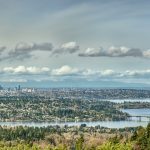 Cascadia Showcases How a Coordinated Corridor Strategy Can Reinforce Urban Innovation
Cascadia Showcases How a Coordinated Corridor Strategy Can Reinforce Urban Innovation
1/30/18 A central premise of Meeting of the Minds is that the flexibility, practicality, and focus of municipal governments make them ideal technological and social innovators. But can the ingenuity of U.S. cities be sufficiently amplified to effectively keep up with the pace of climate change, especially in the face of declining federal leadership?
 Still Not Convinced You Need a Flu Shot? First, It’s Not All About You
Still Not Convinced You Need a Flu Shot? First, It’s Not All About You
1/15/18 Adults also need to get vaccinated to provide herd immunity for others, especially babies and older people.
 The Transportation Revolution Is Not Here … Yet
The Transportation Revolution Is Not Here … Yet
The mobility system of the United States, and of many other markets within the developed world, is going through a period of significant change, but whether we should prepare for a revolution or evolution remains a point of debate. The shots of innovation are being heard around the world, but I suggest that their echoes are likely to fade before any real, tangible changes are enacted on a widespread scale.
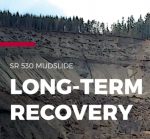 SR 530 Mudslide: Long Term Recovery Report
SR 530 Mudslide: Long Term Recovery Report
(May 2017) On March 22, 2014, a catastrophic landslide affected several communities in northwest Washington when an unstable hillside gave way. A wall of mud buried an entire neighborhood, taking 43 lives and closing State Highway 530, the physical and economic lifeline for the region. In response to the disaster, Washington State University (WSU) assembled a multi-disciplinary team to support the long-term recovery of the impacted communities.
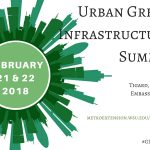 CAHNRS NEW – December 2017
CAHNRS NEW – December 2017
View this months CAHNRS newsletter to learn more about the Western Center’s Green Infrastructure Summit.
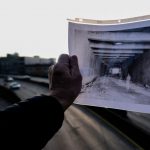 120,000 Square Feet in the Heart of Seattle Is Set to Disappear
120,000 Square Feet in the Heart of Seattle Is Set to Disappear
Seattle City Council this week approved a timeline for tearing down the Highway 99 viaduct. Damaged by an earthquake in 2001, the double-decker highway is being replaced by a controversial, long-delayed deep bore tunnel that’s finally set to open in 2018. Currently cast in the shadow of the elevated highway, Seattle’s waterfront will be transformed into a linear park and promenade when the viaduct comes down in 2019.
 Community Development and Child Development
Community Development and Child Development
Community development and child development have a tight-knit relationship. Community development can have a positive impact on children by making investments that support healthy social and cognitive development. In turn, when children grow up in supportive environments, they are more likely to succeed in school and boost human capital, a key ingredient for building strong communities.
 Showing Conservatives the Scientific Consensus on Climate Change Can Shift Their Views on the Issue
Showing Conservatives the Scientific Consensus on Climate Change Can Shift Their Views on the Issue
12/11/17 Political conservatives are particularly unwilling to accept the reality of climate change. Recent research reiterated this reluctance, and noted that it appears to stem from “worry about the economic and political ramifications of climate science,” rather than an inherent distrust of scientists.
 Renewable Energy Isn’t Perfect, But It’s Far Better Than Fossil Fuels
Renewable Energy Isn’t Perfect, But It’s Far Better Than Fossil Fuels
12/2/17 In their efforts to discredit renewable energy and support continued fossil fuel burning, many anti-environmentalists have circulated a dual image purporting to compare a lithium mine with an oilsands operation. It illustrates the level of dishonesty to which some will stoop to keep us on our current polluting, climate-disrupting path (although in some cases it could be ignorance).
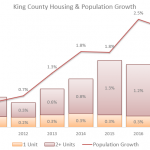 The Regional Housing Gap
The Regional Housing Gap
(11/27/17) Last year, the population of King County grew 48,600, or 2.3%. The housing stock grew 14,700, or 1.6%. The gap, 0.7%, is a rough measure of our failure to create enough housing. This is the sixth straight year when population growth exceeded housing creation in King County. Snohomish and Pierce appeared more balanced until 2014, but now face heightened housing pressures as displacement of King County workers from expensive local housing markets grows.
 Seattle Considers Zoning for More “Family-Sized” Apartments
Seattle Considers Zoning for More “Family-Sized” Apartments
(11/20/17) Seattle’s elected officials want developers to build more family-sized apartments — the two- and three-bedroom units that could offer parents and children an alternative to expensive single-family home rentals. In recent years, less than 20 percent of new apartment construction has been multi-bedroom and the majority of that has been two-bedroom. The city has proposed a new policy that would require residential developers in some low-rise zones to build a two-bedroom or larger unit for every four studios or one-bedrooms they build.
 Hungry and disappearing: Is the orcas’ future already here?
Hungry and disappearing: Is the orcas’ future already here?
(11/14/17) Every day this summer, Jeanne Hyde scanned the waters off the west side of San Juan Island, hoping that the killer whales would show up. All night, she streamed the underwater sounds from microphones submerged along the shoreline, waiting for the whales’ distinctive trills, chirps and whistles to wake her up.
 Office of Planning & Community Development: Growth and Livability
Office of Planning & Community Development: Growth and Livability
(October 2017) Seattle is again the fastest growing city in the country. Our beautiful natural environment, diverse communities, and strong job market all serve to attract people to this region. As our population grows, so too must our supply of housing or Seattle will increasingly be affordable only to the wealthy.
 A National Framework for Urban Extension
A National Framework for Urban Extension
(10/19/17) To help ensure Extension’s relevance and accessibility to an increasingly diverse population, the National Urban Extension Leaders group created a framework based on historical and emerging developments. Themes focus on programs, personnel, partnership, and the positioning of Extension at local, state, and national levels. For Extension to be a vibrant and resilient 21st-century system, it must build on best practices, leverage regional and national networks, and invest in innovative strategies that engage people living and working in metropolitan communities. A robust urban Extension presence contributes to building strong connectivity among urban, suburban, and rural communities.
 How Seattle Bucked a National Trend and Got More People to Ride the Bus
How Seattle Bucked a National Trend and Got More People to Ride the Bus
(10/16/17) Almost every major U.S. city has seen years of decline in bus ridership, but Seattle has been the exception in recent years. Between 2010 and 2014, Seattle experienced the biggest jump of any major U.S. city. At its peak in 2015, around 78,000 people, or about one in five Seattle workers, rode the bus to work. That trend has cooled slightly since then, but Seattle continues to see increased overall transit ridership, bucking the national trend of decline. In 2016, Seattle saw transit ridership increase by 4.1 percent—only Houston and Milwaukee saw even half that increase in the same year.
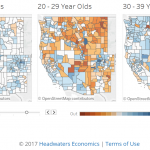 Infographic: Where in the West young people are moving
Infographic: Where in the West young people are moving
(10/16/17) Across the West, more young people are moving out of rural communities than in. In every decade since 1980, most rural counties in the 11 Western states lost 20-somethings, without an influx of other young adults to make up for the loss, according to an analysis of U.S. Census Bureau migration data by the Bozeman-based Headwaters Economics. A few managed to attract young people with the lure of some nearby metro area like Albuquerque or Denver, or a roaring tourism industry like Jackson Hole, Wyoming, but the undeniable trend has been a slow march to cities, where, especially in the West, jobs and people are increasingly concentrated.
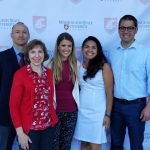 Extension, Metro Center unite communities to solve health challenges
Extension, Metro Center unite communities to solve health challenges
Extending science to serve communities is what Extension is all about. And when it comes to health, entire communities—from youth to elders, rural and urban—must band together to find solutions.
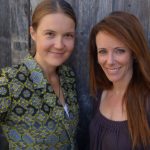 This Startup Lets You Use Your Extra Cash To Invest In Community Development
This Startup Lets You Use Your Extra Cash To Invest In Community Development
(9/28/27) Despite the fact that around 69% of Americans have less than $1,000 in savings, we, as a country, sit on a collective wealth of extra cash; somewhere in the region of $300 billion is idling in accounts nationwide. These are not emergency funds; rather, it’s what Cat Berman, founder of the new Oakland-based startup CNote, calls “just in case” cash–she estimates that there are around 30 million “oversavers,” who have an average of an extra $10,000 in their accounts.
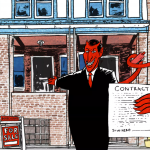 America’s Shameful History of Housing Discrimination
America’s Shameful History of Housing Discrimination
(9/25/17) Read an illustrated timeline and story of America’s shameful history of housing discrimination.
 How Health Care Supports Sustainable Communities
How Health Care Supports Sustainable Communities
(9/18/17) As the public hospital in Cleveland, and one of the city’s oldest institutions, MetroHealth has spent the past 180 years, turning around the lives of patients other people didn’t want to be bothered with. One of our favorite turnarounds isn’t about a patient at all, it’s about Endia Reynolds, a junior at the high school inside our hospital. Endia is the youngest of eight. One of her sisters is a nursing assistant. Her brother owns a towing company. The rest of her siblings are just getting by.
 A Quarter of Seattle Drivers Are Searching for Parking
A Quarter of Seattle Drivers Are Searching for Parking
(8/21/17) A study conducted by University of Washington students (with funding from Microsoft and institutional support from UW and the University of British Columbia) found that 35 percent of cars moving around Seattle “are either searching for parking or are ridesharing drivers waiting for ride assignments.” The latter account for 10 percent of “cruising” behaviors, as the students call it. “It translates to a lot of fuel wasted per year, lots of wasted time,” said a member of the team.
 The Effects of School Gardens on Children’s Science Knowledge: A randomized controlled trial of low-income elementary schools
The Effects of School Gardens on Children’s Science Knowledge: A randomized controlled trial of low-income elementary schools
This randomized controlled trial or ‘true experiment’ examines the effects of a school garden intervention on the science knowledge of elementary school children.
The Service Class Deserves Better
(9/4/17) The service class is the largest class of Americans by far, making up about 45% of the entire workforce. In terms of the jobs they do and the economic functions they serve, in many ways, its members represent the 21st century analog of the old blue-collar working class. And just like we upgraded those once dirty, dangerous, and low-paid manufacturing jobs during the postwar years, we must now rebuild America’s middle class by turning service jobs work into higher-paid, family-supporting work.
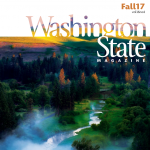 Streaming Solutions
Streaming Solutions
A Washington State Magazine featured article
(8/30/17) At least 63,000 pounds of toxic chemicals end up in Puget Sound each day. From Puyallup to Bremerton, Port Townsend to Everett, WSU Extension and research centers are immersed in Puget Sound revitalization through a combination of investigation, stewardship, and educational outreach programs.
Why Seattle Is Poised to Be a Lead er in ‘Smart City’ Technology and Regulations
er in ‘Smart City’ Technology and Regulations
(8/24/17) New technology is helping local government create “smarter” cities in a variety of ways, from adaptive traffic lights to open data platforms to advanced utility meters. But with innovation comes complication. Privacy, security, and equality challenges are inevitable when the public sector tries to implement technology with the help of private companies.
 Airbnb Extends Hurricane Harvey ‘Free Housing’ Program
Airbnb Extends Hurricane Harvey ‘Free Housing’ Program
(8/29/17) Airbnb is continuing its effort to help those displaced by Tropical Storm Harvey. The short-term rental service said Tuesday it is expanding its disaster response program.
 Don’t Throw Away Those Eclipse Glasses
Don’t Throw Away Those Eclipse Glasses
(8/22/17) If you aren’t hoarding them for the 2024 eclipse, there is a very good use for them. Astronomers Without Borders will take them off your hands and put them in the hands of children. The glasses will be redistributed across South America and Asia for the 2019 total solar eclipse. They will be used to aid STEM education in schools that can’t afford to provide glasses for their students.
 A Quarter of Seattle Drivers Are Searching for Parking
A Quarter of Seattle Drivers Are Searching for Parking
(8/21/17) A study conducted by University of Washington students (with funding from Microsoft and institutional support from UW and the University of British Columbia) found that 35 percent of cars moving around Seattle “are either searching for parking or are ridesharing drivers waiting for ride assignments.” The latter account for 10 percent of “cruising” behaviors, as the students call it. “It translates to a lot of fuel wasted per year, lots of wasted time,” said a member of the team.
 Seattle Rental Applicants’ Criminal Histories Virtually Off-Limits Under New Law
Seattle Rental Applicants’ Criminal Histories Virtually Off-Limits Under New Law
(8/14/17) Landlords will be forbidden from screening tenants based on criminal records, under an ordinance the Seattle City Council approved Monday. The Seattle City Council approved an ordinance Monday that will mostly prohibit landlords from screening tenants based on their criminal records.
 Leadership: It’s What You Make of It
Leadership: It’s What You Make of It
(7/12/17) The road to becoming a strong leader involves being humble, continuing to learn and accepting mistakes as opportunities to grow, writes Naphtali Hoff. “Hold to your vision and your dreams, even when it seems they have dimmed,” he writes.
 WSU’s Everett Campus Hosting August 15 Ribbon Cutting and Open House
WSU’s Everett Campus Hosting August 15 Ribbon Cutting and Open House
EVERETT, Wash. – WSU North Puget Sound at Everett announced an August 15 ribbon-cutting ceremony and open house for the campus’s new building at 915 N. Broadway in Everett.
 Children and Youth Summer Meal Program
Children and Youth Summer Meal Program
(8/7/17) The City of Seattle funds a summer meal program, providing no-cost breakfasts, lunches, and snacks for kids and teens ages 1-18 years. The 2017 program runs from June 28th through August 25th.
 Short Answers to Hard Questions About the Opioid Crisis
Short Answers to Hard Questions About the Opioid Crisis
(8/3/17) This week, President Trump’s commission on combating the opioid crisis, led by Gov. Chris Christie of New Jersey, recommended that the president declare a national emergency.
The problem has become significantly worse recently, so you might feel that you could use a little catching up.
 Can The World Thrive on 100% Renewable Energy
Can The World Thrive on 100% Renewable Energy
(7/13/17) A WIDELY read cover story on the impact of global warming in this week’s New York magazine starts ominously: “It is, I promise, worse than you think.” It goes on to predict temperatures in New York hotter than present-day Bahrain, unprecedented droughts wherever today’s food is produced, the release of diseases like bubonic plague hitherto trapped under Siberian ice, and permanent economic collapse. In the face of such apocalyptic predictions, can the world take solace from those who argue that it can move, relatively quickly and painlessly, to 100% renewable energy?
 This Database Tells You Which Bad Chemicals Are Hiding In Your Tap Water
This Database Tells You Which Bad Chemicals Are Hiding In Your Tap Water
(7/26/17) Access this database, enter your zip code, view the list of utilities that serve your area and discover the contaminants found in your water.
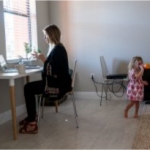 How to Close a Gender Gap: Let Employees Control Their Schedules
How to Close a Gender Gap: Let Employees Control Their Schedules
The main reason for the gender gaps at work — why women are paid less, why they’re less likely to reach the top levels of companies, and why they’re more likely to stop working after having children — is employers’ expectation that people spend long hours at their desks, research has shown. It’s especially difficult for women because they have disproportionate responsibility for care-giving.
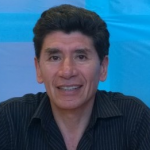 Diversity award, new article on Latino business for García-Pabón
Diversity award, new article on Latino business for García-Pabón
(July 2017) WSU Metro Center’s José García-Pabón, associate professor in Extension Community and Economic Development and Latino Community Studies and Outreach specialist, has earned National Association of Community Development Extension Professionals (NACDEP) honors in diversity for 2017. He placed second nationally and won top honors in the Western region. The awards were presented at the NACDEP-CDS Joint Conference, June 11-14 in Big Sky, Mont.
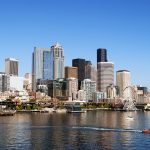 Invest in Resilience Before Disaster Strikes
Invest in Resilience Before Disaster Strikes
(7/18/17) Across the nation heatwaves, droughts and floods have become more frequent and more severe, increasing risks to people, homes, and infrastructure. Between 2011 and 2013, the U.S. experienced 32 weather events that each caused at least one billion dollars in damages.
Low-income communities are on the front lines of this damage, and they continue to be the most vulnerable. From the Chicago heatwave of 1995 that led to 739 deaths to Hurricane Katrina and Superstorm Sandy, these areas are often the first victims of extreme weather and the last to recover from devastation.
 The Uninhabitable Earth
The Uninhabitable Earth
(7/11/17) It is, I promise, worse than you think. If your anxiety about global warming is dominated by fears of sea-level rise, you are barely scratching the surface of what terrors are possible, even within the lifetime of a teenager today. And yet the swelling seas — and the cities they will drown — have so dominated the picture of global warming, and so overwhelmed our capacity for climate panic, that they have occluded our perception of other threats, many much closer at hand. Rising oceans are bad, in fact very bad; but fleeing the coastline will not be enough.
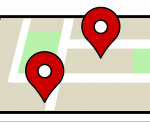 Mapping Average Commutes from Anywhere in the Seattle Area
Mapping Average Commutes from Anywhere in the Seattle Area
(7/7/17) How long is your commute compared to your neighboring cities? Learn more about the interactive map and your city’s commute times.
 Work in Seattle? Six months of paid family leave may soon be an option
Work in Seattle? Six months of paid family leave may soon be an option
Attention new parents: By 2020, Seattle could require all businesses in its city limits to offer you six months of paid time off. The proposal would more than double what New York offers, which is 12 weeks, currently the longest paid parental leave policy in the country.
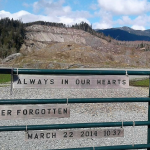 Revised Community Revitalization Plan – Arlington and Darrington
Revised Community Revitalization Plan – Arlington and Darrington
(6/28/17) A follow-up report that describes the communities progress over the past 11 months of implementation and future goals centered around infrastructure, industries and employment, community and workforce development, resilience and sustainability, placemaking and rural innovation.
 Tacoma’s Doing Something Different on Homelessness
Tacoma’s Doing Something Different on Homelessness
(6/7/17) Like Seattle, Tacoma has a homelessness problem so severe that city leaders have declared a state of emergency. But the city is taking a different approach than its neighbor to the north.
Tacoma is framing its emergency declaration as one of “public health.” It’s a bit more limited than the attempts in Seattle and King County, as well as others in Portland, Los Angeles, Honolulu and the state of Hawaii, where the emergencies are more generally about homelessness itself.
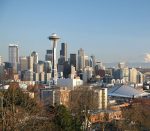 Seattle is Denser Than 90% of Large U.S. Cities
Seattle is Denser Than 90% of Large U.S. Cities
(6/8/17) There’s been a good deal of recent attention to Seattle’s continued growth spurt. The Upshot column in the New York Times points out that we’re also one of the few cities that is growing denser as we add population. In fact, Seattle is already cited as the 8th most dense of the 50 most populous U.S. cities. I’ll expand on that last fact in this post – hopefully giving some context for what our current state of density means relative to the other large cities of the U.S.
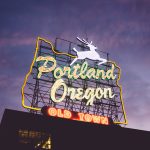 Oregon Equal Pay legislation heads to Gov. Brown
Oregon Equal Pay legislation heads to Gov. Brown
(5/22/17) Legislation that will ensure women are paid the same rate as men for the same work is headed to Oregon Gov. Kate Brown for her signature. House Bill 2005, which was amended by the Senate last week, unanimously re-passed the House Monday.
 SR 530 Mudslide: Long Term Recovery Report
SR 530 Mudslide: Long Term Recovery Report
(May 2017) On March 22, 2014, a catastrophic landslide affected several communities in northwest Washington when an unstable hillside gave way. A wall of mud buried an entire neighborhood, taking 43 lives and closing State Highway 530, the physical and economic lifeline for the region. In response to the disaster, Washington State University (WSU) assembled a multi-disciplinary team to support the long-term recovery of the impacted communities.
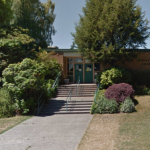 One Tool for Dismantling Structural School Segregation in Seattle: Better Zoning
One Tool for Dismantling Structural School Segregation in Seattle: Better Zoning
(5/16/17) View Ridge Elementary is one of Seattle’s highest-rated public elementary schools. Eighty-five percent of View Ridge students demonstrate or exceed grade-level proficiency on math and English standardized tests, well above the state average of 55 percent. But despite being a public school, it tends to be expensive to attend View Ridge—prohibitively so. There’s a structural reason for this: The city has zoned 93 percent of the school’s attendance area single-family zoning. Unless a family is wealthy enough to afford a house in the neighborhood, where home prices average $850,000, or lucky enough to find an affordable rental (only a quarter of dwellings in the surrounding census tract are renter-occupied, and rents average $3,000 per month), the chances of attending this school rest on the whim of the district lottery via the open enrollment process. This school year (2016-2017) just four out-of-area students won admission to View Ridge, and all of them already had siblings attending the school.
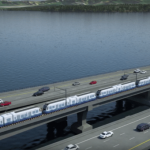 The World’s First Floating Light Rail
The World’s First Floating Light Rail
(5/15/17) Seattle already has the world’s longest floating bridge, and next month, it’s going one step further: building the world’s first floating light rail line. The undertaking is part of a $3.7 billion project to build a light rail corridor linking Seattle to the city of Bellevue on the east side of Lake Washington by 2023. It’s a tricky endeavor; the floating bridge has to withstand the pressure of two pairs of 300-ton trains traveling at speeds of up to 55 mph. To make it happen, the transit agency Sound Transit is turning to cutting-edge earthquake technology.
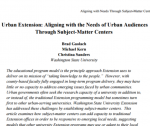 Urban Extension: Aligning with the Needs of Urban Audiences Through Subject-Matter Centers
Urban Extension: Aligning with the Needs of Urban Audiences Through Subject-Matter Centers
Written by: Brad Gaolach, Michael Kern and Christina Sanders
The educational program model is the principle approach Extension uses to deliver on its mission of “taking knowledge to the people.” However, with county-based faculty fully engaged in long-term program delivery, they may have little or no capacity to address emerging issues faced by urban communities. Urban governments often seek the research capacity of a university in addition to, or instead of, the traditional Extension programming model but sometimes turn first to other urban-serving universities. Washington State University Extension has addressed these challenges by establishing subject-matter centers. This article examines how subject-matter centers can add capacity to traditional Extension offices in order to be responsive to emerging local needs, suggesting models that other university Extension programs may use or adapt to their local communities. These models also foster more community engagement and articulate greater public value for the institution as a whole.
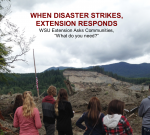 When Disaster Strikes, Extension Responds – WSU Extension Asks Communities, “What do you need?”
When Disaster Strikes, Extension Responds – WSU Extension Asks Communities, “What do you need?”
Written by: Christina Sanders, Martha Aitken and Monica Babine
On March 22, 2014, a catastrophic landslide devastated a rural region in northwest Washington. A hillside gave way, burying an entire neighborhood, taking 43 lives, and temporarily closing State Highway 530, the physical and economic lifeline for the area. Carrying a wall of mud and debris, it destroyed 49 homes and structures; creating a slide zone nearly a mile wide. In the aftermath, what emerged were resilient and interdependent communities with a shared goal of growing their economies while preserving quality of life. The events of that day could have left a region totally devastated but instead they served as a catalyst for economic revitalization efforts, and spurred Washington State University (WSU) to explore how it supports communities in moving forward after a disaster.
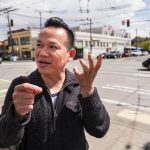 High-rises in the Chinatown ID? Fear that development could erase neighborhood’s culture
High-rises in the Chinatown ID? Fear that development could erase neighborhood’s culture
(5/1/17) The upzone drawn up by Mayor Ed Murray would allow even taller buildings in most of Chinatown International District, including Little Saigon, and trigger a new program requiring developers to help create affordable housing.
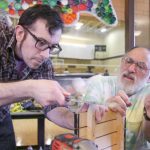 Reduce, Reuse… Repair? Pacific Northwest Fix-It Movement Grows
Reduce, Reuse… Repair? Pacific Northwest Fix-It Movement Grows
(4/26/17) Savino’s been mending stuff since he was small enough to fit in the chair. Now, thanks to him and a cadre of repair-happy Western Washington residents, more broken stuff is getting a second chance at life. Savino volunteers at “Repair Time,” a new King County recycling program that aims to encourage residents to think twice before tossing their broken stuff.
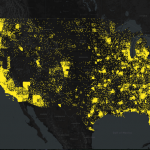 Mapping America’s Intractable Homelessness Problem
Mapping America’s Intractable Homelessness Problem
(4/7/17) America has an enduring homelessness problem, with incredible human and economic costs. When they’re acknowledged, homeless people are routinely shunned and criminalized, and often considered less than human. But even folks who want to help often find it hard to wrap their heads around the complex issue.
 Can Tiny Houses In People’s Backyards Help Alleviate The Homelessness Crisis?
Can Tiny Houses In People’s Backyards Help Alleviate The Homelessness Crisis?
(4/5/17) If you own a house in Portland, Oregon, the county government wants to make you a deal: It will build you a free tiny house for your backyard if you agree to let a homeless family live there for five years. After that, you can rent it to whoever you want. “Like many large cities, we have a crisis when it comes to homelessness,” says Marc Jolin, director of A Home for Everyone, an initiative to prevent and end homelessness in the area that is helping fund the tiny homes.
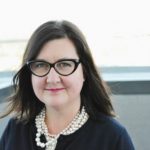 How Seattle is Dismantling the NIMBY Power Structure
How Seattle is Dismantling the NIMBY Power Structure
(4/3/17) For decades, activist homeowners have held virtual veto power over nearly every decision on Seattle’s growth and development. In large and small ways, these homeowners, who tend to be white, more affluent and older than the average resident, have shaped neighborhoods in their reflection — building a city that is consistently rated as one of the nation’s most livable, as well as one of its most expensive.
 Good Schools, Affordable Homes: Finding Suburban Sweet Spots
Good Schools, Affordable Homes: Finding Suburban Sweet Spots
(3/30/17) For better or worse, it’s common for city-dwelling families that reach a certain size to make the leap to the suburbs for more space and better schools. But even among comparable suburban neighborhoods, seemingly arbitrary school district boundaries can lead to huge differences in price.
 Work in Seattle? Six months of paid family leave may soon be an option
Work in Seattle? Six months of paid family leave may soon be an option
Attention new parents: By 2020, Seattle could require all businesses in its city limits to offer you six months of paid time off. The proposal would more than double what New York offers, which is 12 weeks, currently the longest paid parental leave policy in the country.
 It’s not your imagination: bike sharing systems are popping up all over the place
It’s not your imagination: bike sharing systems are popping up all over the place
When I was in grad school at the University of Montana back in the late 1990s, they launched a small bike sharing system as an experiment. I forget if it was Missoula-wide or just the university (Google is no help), but there were these funky green bikes with wire baskets, kept, unlocked, in wooden sheds. Anyone could take one — you were just supposed to put it back in one of the sheds. It all ran on the honor system.
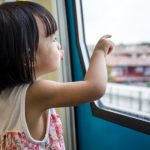 Early Exposure to Public Transportation Can Lead to More Sustainable Travel Later in Life
Early Exposure to Public Transportation Can Lead to More Sustainable Travel Later in Life
Imagine a thirty-something born and bred New Yorker who packs up and move to Los Angeles. As a stereotypical New Yorker, she used transit or walked most places. Now that she lives in L.A., does her experience of using public transit in New York continue to influence her daily travel? Is she more likely to use transit than her Angeleno peers who have lived their whole lives in auto-dependent neighborhoods? Or does she adapt to the new reality, abandoning her transit habits in the context of a new built environment? In a recent publication in the Journal of Planning Education and Research (JPER), we test whether past experience living in areas with high-quality public transit influences travel behavior later in life.
 Community Development and Child Development
Community Development and Child Development
Community development and child development have a tight-knit relationship. Community development can have a positive impact on children by making investments that support healthy social and cognitive development. In turn, when children grow up in supportive environments, they are more likely to succeed in school and boost human capital, a key ingredient for building strong communities.
 Does Your Code Provide Homelessness Solutions?
Does Your Code Provide Homelessness Solutions?
Homelessness has been prevalent in our region for some time, but in recent years there has been a clear increase in the number of homeless. This can be readily observed, and has been confirmed in various reports and statistical measurements. For example, the 2016 One Night Count in King County showed 4,505 homeless people, a 19 percent increase over 2015.
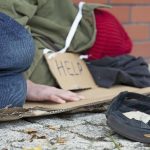 Homelessness & Housing Toolkit Provides Best Practices, Real-World Examples for Washington Cities
Homelessness & Housing Toolkit Provides Best Practices, Real-World Examples for Washington Cities
MRSC and the Association of Washington Cities (AWC) have recently partnered to produce the Homelessness & Housing Toolkit for Cities in order to document methods being employed by cities and counties to address the concurrent issues of homelessness and housing affordability. Despite a 10-year pledge to end homelessness in Washington by 2015, that deadline has come and gone. Instead, Washington is 1 of only 13 states that saw an increase in its homeless population in 2016, up by 7.3% from 2015, according to the Department of Housing and Urban Development’s 2016 Annual Homeless Assessment Report to Congress.
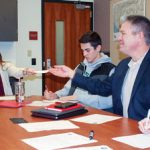 Youth Council making strides in creating activities, options for teens
Youth Council making strides in creating activities, options for teens
Less than half a year after its inception the Arlington Youth Council is already creating activities for youth, such as art competitions, and supporting more options for local teens. Seven local teens formed the council last September and have been working toward their main mission of providing more recreation and activities for teens in the community.
 Big House Big Business – A spotlight on the US Prison System (.pdf)
Big House Big Business – A spotlight on the US Prison System (.pdf)
This spotlight on the US prison system first delves into the statistics of mass incarceration and the rise of the United States’ private prison system. Next, an article showcases a Las Vegas-based startup company named Pigeonly that helps inmates stay in contact with friends and family. Lastly, a spotlight article written by the Metro Center’s Community Sustainability Specialist, Antony Gromko, on reducing recidivism.
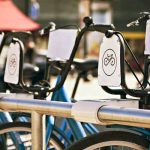 27 Actions Cities Can Take to Realize the Benefits of Shared-Use Mobility
27 Actions Cities Can Take to Realize the Benefits of Shared-Use Mobility
From the launch of electric bikesharing systems to the rise of new carpooling concepts and microtransit services like Bridj and Chariot, cities today are facing the biggest disruption to the transportation sector since the automobile replaced the horse-drawn carriage…
 How to Close a Gender Gap: Let Employees Control Their Schedules
How to Close a Gender Gap: Let Employees Control Their Schedules
The main reason for the gender gaps at work — why women are paid less, why they’re less likely to reach the top levels of companies, and why they’re more likely to stop working after having children — is employers’ expectation that people spend long hours at their desks, research has shown. It’s especially difficult for women because they have disproportionate responsibility for care-giving.
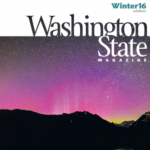 Washington State Magazine: Call it the Urban Extension
Washington State Magazine: Call it the Urban Extension
The massive Oso landslide killed 43 people, caused extensive flooding, and destroyed a key highway north of Everett in 2014, pushing the communities of Arlington and Darrington to their breaking point. Working in partnership with the two municipalities, the Economic Alliance Snohomish County and numerous local partners, the Metro Center has steadily guided the communities in their quest for sustainable economic prosperity.
 Big House Big Business – A spotlight on the US Prison System (.pdf)
Big House Big Business – A spotlight on the US Prison System (.pdf)
This spotlight on the US prison system first delves into the statistics of mass incarceration and the rise of the United States’ private prison system. Next, an article showcases a Las Vegas-based startup company named Pigeonly that helps inmates stay in contact with friends and family. Lastly, a spotlight article written by the Metro Center’s Community Sustainability Specialist, Antony Gromko, on reducing recidivism.